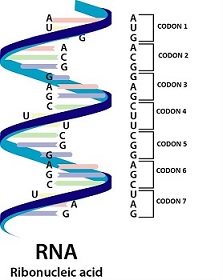 Genetics is Changing how we Think and Work!
Genetics is Changing how we Think and Work!
in health science - in agriculture -in horticulture ...and much more!
An understanding of genetics will be more important as we move into the future; but it can be a difficult subject to understand if you don't have a proper grasp of the fundamentals -Grasping those fundamentals is what this course is about!
Genetics is being used increasingly by all sorts of people, in all sorts of jobs -not just plant scientists; and that trend is set to continue.
It is likely that an understanding of genetics will become increasingly important for people who work on farms, in plant nurseries, zoos, veterinary practices, medical offices and many other places You might not need to be a geneticist; but you are likely to need the level of knowledge imparted in this course.
Studying genetics can feel like studying another language – the biological language of genes and DNA. It is expected that you will have some prior biological study to undertake this course.
Lesson Structure
There are 10 lessons in this course:
-
Introduction to Genetics
-
Scope, nature and history
-
Darwin and Mendel
-
Mendel’s experiment
-
Mendel’s law of segregation
-
Mendel’s Law of Independent Assortment
-
Advances since Mendel
-
Important genetics terminology
-
Set task
-
Assignment
-
Cells, Organelles and Cell Division
-
Prokaryotes
-
Eukaryotes
-
Organelles in the cell
-
Cell structure and function
-
Organelles in plants -Cell wall, Vacuole,Plastids
-
Organelles in plants and animals - plasma membrane, cytoplasm, ribosomes etc.
-
Genetic structures and materials
-
Nucleus
-
Nuclear envelope
-
Nucleolus
-
DNA
-
Cell division –meiosis and mitosis
-
DNA replication
-
Four stages of Mitosis
-
Cytokinesis
-
Gameotogenesis
-
Gametes
-
Meiosis
-
Meosis 1
-
Meosis 2
-
Gamete production in plants
-
Set task
-
Assignment
-
Interaction between Chromosomes
-
Introduction
-
Sex determination
-
Sex chromosomes
-
Sex linked inheritance
-
Haemophilia example
-
Colour blindness example
-
Linkage and crossing over
-
Linked genes
-
Genetic mapping
-
Set task
-
Assignment
-
Interaction between Genes
-
Introduction
-
Traits and gene expression
-
Polygenic inheritance
-
Gene interactions
-
Epistasis
-
Enhancer genes
-
Suppressor gene
-
Incomplete dominance
-
Codominance
-
Lethal genes
-
Cytoplasmic inheritance
-
Gene expression
-
Transcription
-
Translation
-
Set tasks
-
Assignment
-
Genetic Chemistry
-
Nucleic acids
-
DNA (Deoxyribonucleic Acid) Structure
-
Double Stranded Helix
-
Chromasomes
-
Chromatin
-
Chromatids
-
Understanding the genetic code
-
Role of proteins
-
Transcription and translation
-
Post translational modification
-
Introns and exons
-
Reading the code
-
Set task
-
Assignment
-
Mutations
-
Introduction
-
Chromosome mutations
-
Insertion
-
Inversion
-
Duplication
-
Translocation
-
Nondisjunction
-
Gene mutations
-
Point mutations (single nucleotide polymorphism (SNP)
-
Point substitution mutation
-
Insertions
-
Deletions
-
Frameshift mutations
-
Categories of gene mutations
-
Silent mutations
-
Missense mutations
-
Nonsense mutations
-
How do mutations occur
-
Radiation
-
Viruses or other microorganisms
-
Chemicals
-
Spontaneous mutations
-
Effect of mutations
-
Repair of mutations
-
Set task
-
Assignment
-
DNA Repair and Recombination
-
Introduction
-
Excision pathways
-
Methyl directed mismatch repair
-
SOS repair
-
Photoreactivation (Light dependent repair)
-
Crossing over
-
Recombination
-
Set task
-
Assignment
-
Developmental Genetics
-
Introduction
-
Genetics are instructions for structures
-
Cellular organisation and differentiation
-
Model organisms used in developmental genetics
-
Why study developmental genetics
-
The human genome project
-
Birth defects
-
Genetic advances in birth defects
-
Gene therapy
-
Gene therapy and cancer
-
Set task
-
Assignment
-
Population genetics
-
What is population genetics
-
Genetic variation within a population
-
How do we measure genetic variation
-
The hardy weinberg law
-
Evolutionary agents and their effect on populatyion genetics
-
Mutations
-
Movement of individuals between populations
-
Genetic drift
-
Non random mating
-
Natural selection
-
Polymorphism
-
Set tasks
-
Assignment
-
Applied Genetics
-
Genetics in breeding animals
-
Farm animal breeding
-
Breeding pets
-
Genetics for breeding plants
-
Cloning plants
-
Cloning -somatic cell nuclear transfer
-
Modifying organisms genetically
-
Transgenic animals
-
Agricultural applications for transgenics
-
Medical applications for transgenics
-
Transgenics to modify DNA in plants
-
Genetics in human health science
-
Disease understanding
-
Diagnosis of disease
-
Genetic screening
-
Gene therapy
-
Pharmacogenomics
-
Set task
-
Assignment
Aims
-
To acknowledge the history of modern genetics and interpret important terminology in genetics work used, specifically relating to areas of study such as plant and animal sciences, conservation of plant and animal species, agriculture, horticulture, veterinary medicine and human health sciences.
-
To develop understanding of the structures (organelles) of cells and comprehend their basic functions specifically relating to cell division.
-
To discuss the main ways features are inherited.
-
Develop knowledge of biological interactions and understand the significance of gene expression in heritability.
-
Describe chemicals and chemical reactions that are involved with genetics
-
Explain the nature and management of genetic mutations.
-
Develop understanding of how DNA repair mechanisms, and recombination to understand the significance of DNA cleaving and re-joining.
-
Demonstrate an understanding of genetics to explain how variations occur in living organisms both within and beyond species.
-
Explain both the significance and dynamics of genetic variation within populations of different living organisms.
-
Describe how genetic knowledge is applied to a variety of human endeavors.
Do you need to study a genetics module for university entry? This is it.
Do you need extra tuition in this area of your study? Use our tutors.
Do you have a background in health or animal science and need more knowledge about cellular function? Learn it here.
Do you need to understand genetics for increases in agricultural production? Develop your skills.
THE FUTURE OF GENETICS
All life sciences, from agriculture and horticulture, to veterinary and human health science, are being impacted increasingly by our rapidly developing understanding of genetics. While the future may not be predictable, there is little doubt that a knowledge of genetics will lay a very good foundation for many business and employment opportunities over the coming decades.
Genetics is being used increasingly by all sorts of people, in all sorts of jobs -not just plant scientists; and that trend is set to continue.
It is likely that an understanding of genetics will become increasingly important for people who work on farms, in plant nurseries, zoos, veterinary practices, medical offices and many other places You might not need to be a geneticist; but you are likely to need the level of knowledge imparted in this course.
Farm Animal Breeding
Selective breeding in farm animals is centered around identifying the most desirable characteristics and breeding from those animals that display them. Traits essentially fit into five basic categories
1. Fitness traits: these are usually linked to reproduction such as litter size, conception rate, gestation length, survival rates of young
2. Production traits: these include milk yield, growth rate, feed efficiency, number of eggs
3. Quality traits: these include carcass composition, level of fat, meat and milk quality.
4. Type traits: these include physical appearance such as coat colour, udder shape, number of teats in pigs.
5. Behavioural traits: these include herding ability in sheep dogs, temperament, mothering ability.
Pet breeding
Whereas the main objective of a farm animal breeding program is to improve performance, breeding programs for pedigree cats and dogs and other pet animals has centered on how they look i.e. the phenotype. This has led to the development of over 1700 different dog breeds throughout the world. Pedigree dog breeding is big business and can generate significant amounts of money for the breeder. In recent years it has come under heavy criticism as one of the consequences of breeding for specific traits that effect appearance is that other genes may also be selected that are detrimental to the dogs health and welfare. In particular some breeds e.g. pugs and King Charles Spaniels were being breed with such shortened noses that they were having breathing problems
Plant Breeding
Plant breeding has been practiced for thousands of years, since near the beginning of human civilization. It is essentially the manipulation of plant species in order to create desired genotypes and phenotypes for specific purposes. These days, this manipulation involves either controlled pollination, genetic engineering, or both, followed by artificial selection of progeny. Classical plant breeding uses the planned crossing of closely or distantly related individuals to produce new crop varieties or lines with desirable properties. These may include colour, shape, disease resistance or potential yield in crop producing plants. Plants are crossbred to introduce traits/genes from one variety or line into a new genetic background.
It is now practiced worldwide by government institutions and commercial enterprises as it is believed that breeding new crops is important for ensuring food security through the development of crops suitable for their environment such as drought conditions or warmer climates.
HUMAN HEALTH
Genetics research has lead to an understanding of what causes disease, the diagnosis of diseases and genetic screening to identify populations that are of risk from a specific genetic disorder.
Diagnosis of disease
Genetic testing is used to diagnose many disorders such as Turner’s syndrome, Klinefelter’s syndrome and many heart and blood disorders. The diagnosis of a genetic disorder may indicate that the relatives of the affected person should be screened for the genetic defect or whether they carry the gene.
Genetic Screening
This is the use of a test to identify people who have, are predisposed to or carriers of a certain genetic disease. It can be applied at many stages of life and used for a variety of purposes.
Learn the fundamentals
Whether it is important for you to understand why organisms look the way they do and how they work; or whether you want to learn the genetic principles that underpin so many disciplines so that you can apply your knowledge; or whether you are contemplating a career involving genetics and are wanting to start out with the basics... A knowledge of the fundamental genetic concepts is invaluable... and this course will teach you just that.
Where do you go from here?
If you are ready to enrol just follow the prompts on the top right hand side of this page.
If you need some guidance contact us and we will be happy to help.
TALK TO ONE OF OUR TUTORS
Use our Free Course & Career Counselling Service
Gain from our Experience
